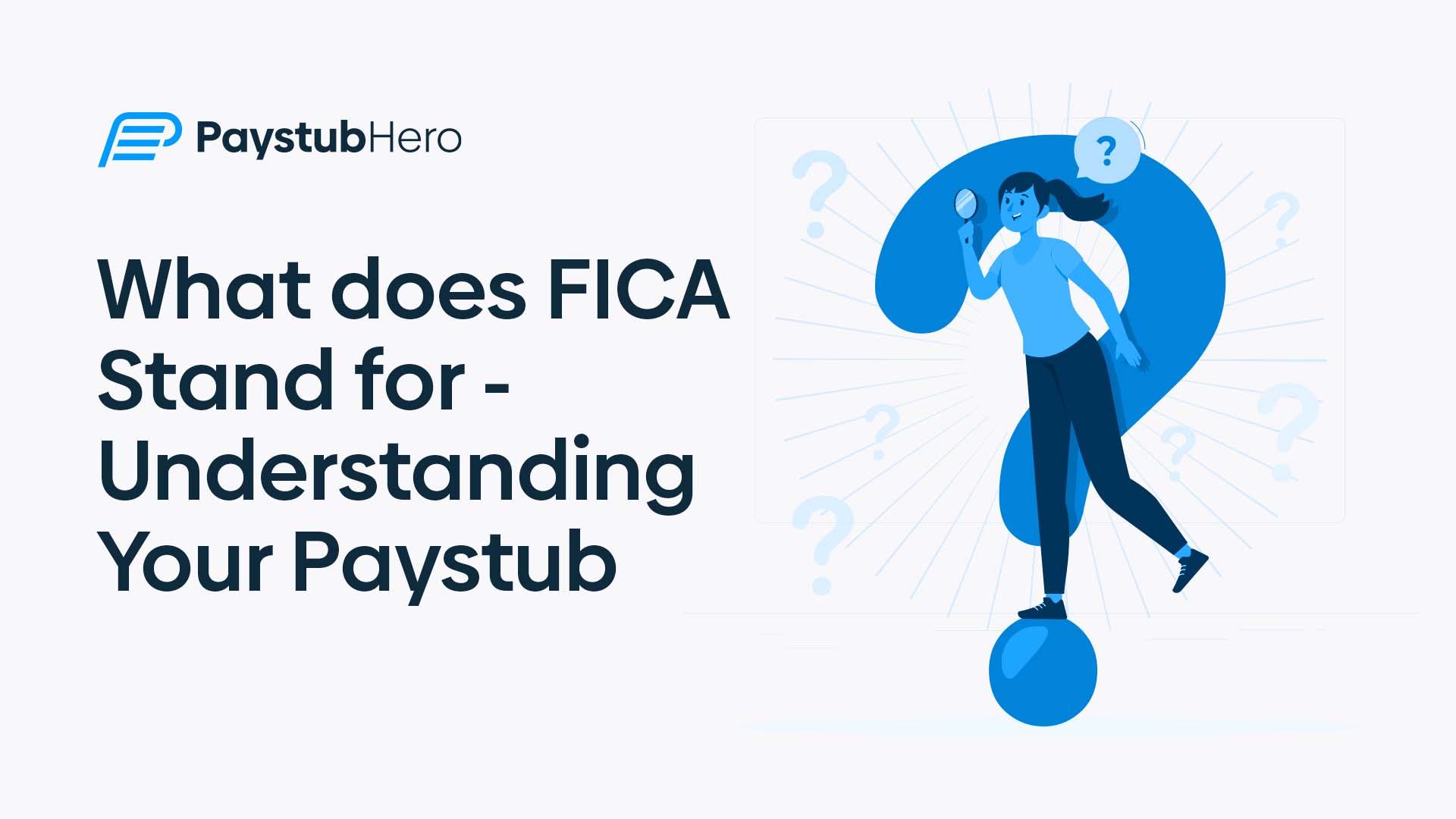FICA stands for the Federal Insurance Contributions Act. You’ll see it on your paystub, it’s the line where part of your paycheck goes to the government.
That money helps fund Social Security and Medicare. In other words, it supports people who’ve retired, are living with a disability, or need health coverage.
And, if you’re employed, you don’t get a say, it’s taken out automatically. Wondering why it’s there, how much it takes, and what you’re getting out of it? Let’s clear it all up.
What Does FICA Pay For?
As we have seen earlier, FICA taxes fund two major federal programs:
➡ Social Security: This provides retirement benefits, disability insurance, and survivor benefits for children and spouses of deceased workers.
➡ Medicare: This covers healthcare for people 65 and older, and for some younger people with disabilities.
So when you see “FICA” on your paystub, that money is being split between these two programs. You’re helping today’s retirees and eventually paying into your own future benefits.
How Much Is FICA Tax?
As of now, the total FICA tax rate is 15.3%. Here’s how it breaks down:
⦿ 12.4% goes to Social Security
⦿ 2.9% goes to Medicare
If you’re an employee, you pay half of that. 7.65% comes out of your paycheck, and your employer matches it. That’s:
⦿ 6.2% for Social Security
⦿ 1.45% for Medicare
If you’re self-employed, you’re both the boss and the worker. That means you pay the full 15.3% yourself. It’s called the self-employment tax.
Is There a Limit to How Much FICA You Pay?
Yes and no.
For Social Security, there’s a cap. In 2025, that cap is $176,100. If you earn more than that in a year, you stop paying the Social Security portion once you hit the cap.
But Medicare has no cap. You pay the 1.45% on all your income, no matter how much you earn. And if you make over $200,000 a year (or $250,000 if you’re married filing jointly), you pay an extra 0.9% in Medicare tax.
That’s called the Additional Medicare Tax.
How Does FICA Show Up on a Paystub?
Look at your paystub and find these two lines:
⦿ Social Security tax
⦿ Medicare tax
Those two together make up your FICA contribution. Depending on the formatting of your paystub, it might just be labeled as “FICA taxes” or split into the two parts.
Either way, that money is going straight to the federal government.
What If You're Self-Employed?
If you’re a freelancer, contractor, or run your own business, you’re responsible for paying the full 15.3% FICA tax yourself. This is part of your self-employment tax.
But there’s good news. When you file your taxes, you can deduct the employer half (7.65%) from your taxable income. It helps ease the blow a bit.
And if your income fluctuates or varies, it’s smart to set aside FICA taxes regularly. Treat it like a bill, because come tax time, the IRS will expect you to pay it.
How to Manage FICA Taxes as a Solo Entrepreneur
FICA taxes can catch solo entrepreneurs off guard. Here’s how to stay on top of it:
1. Know the Limits
You only pay the 12.4% Social Security tax up to $176,100 in 2025, up 4.45% from $168,600 last year. Earn more? It’s just 2.9% Medicare tax after that. If you’re single and make over $200,000, add a 0.9% Medicare surtax.
Let’s take yourself as a graphic designer earning $190,000.
Your Social Security tax is $176,100 × 0.124 = $21,836.40.
For the remaining $13,900, you pay $13,900 × 0.029 = $403.10 in Medicare. Total FICA: $22,239.50.
Pop over to the IRS each year for updated limits to nail your calculations and avoid overpaying.
2. Track Your Income
Sloppy records can land you in hot water with the IRS.
While the overall audit rate isn’t exceptionally high, self-employed individuals face a greater likelihood of scrutiny. For instance, data analysis has shown that while the general audit rate hovers around 0.4%, self-employed filers can experience audit rates ranging from approximately 0.8% to 1.6%.
You can dodge this by logging every penny using QuickBooks ($20/month) or a free Google Sheet.
We can still use our previous sample to illustrate more.
You are a graphic designer but now pulling in $90,000 in 2025. Each week, you earn $1,730 and calculate $1,730 × 0.153 = $264.69 for FICA. Try FreshBooks to sync with your bank for real-time updates.
Check your numbers monthly to catch mistakes early, so tax season’s smooth and you’re not sweating penalties.
3. Set Aside Taxes Regularly
Don’t let FICA taxes ambush you at year-end. If you owe over $1,000 annually, the IRS wants quarterly payments. Most solo entrepreneurs qualify.
Stash 15.3% of each client payment in a savings account.
Suppose you’re a consultant earning $120,000 in 2025. Your FICA tax is $120,000 × 0.153 = $18,360, or $4,590 per quarter, due April 15, June 15, September 15, and January 15.
Use Form 1040-ES and pay online at the IRS to skip 8% underpayment penalties. Set up auto-transfers to stay on top and keep your finances stress-free.
Do You Benefit From FICA Taxes?
Yes.
The money you put in now isn’t just disappearing. You’re earning Social Security credits toward future benefits. Once you hit a certain number of credits, you’re eligible for retirement, disability, and Medicare benefits.
So it is an investment in your future. Not glamorous, but important.
FICA vs. Other Payroll Deductions
Your paystub might show other deductions, like:
⦿ Federal income tax
⦿ State income tax
⦿ Health insurance
⦿ Retirement contributions (401k, IRA)
FICA is separate. It doesn’t depend on your tax bracket or deductions. It’s a flat rate, taken out regardless of your filing status or exemptions.
PaystubHero Makes It Easy
Manually calculating and tracking FICA taxes is a pain. But we help with that.
PaystubHero is a platform that helps you and small businesses generate accurate, professional paystubs. It automatically calculates FICA, income tax, and other deductions based on your inputs.
If you’re self-employed or running a lean business, PaystubHero can help you:
➡ Stay compliant with tax laws
➡ Keep clean records
➡ Avoid surprises at tax time
FAQs
Below are some frequently asked questions about FICA
Not quite. FICA includes both Social Security and Medicare taxes.
Employees and employers split it 50/50. Self-employed individuals pay the full amount themselves.
No. FICA applies only to earned income, not to benefits.
Because it funds Social Security and Medicare, programs you’ll likely use in the future.




